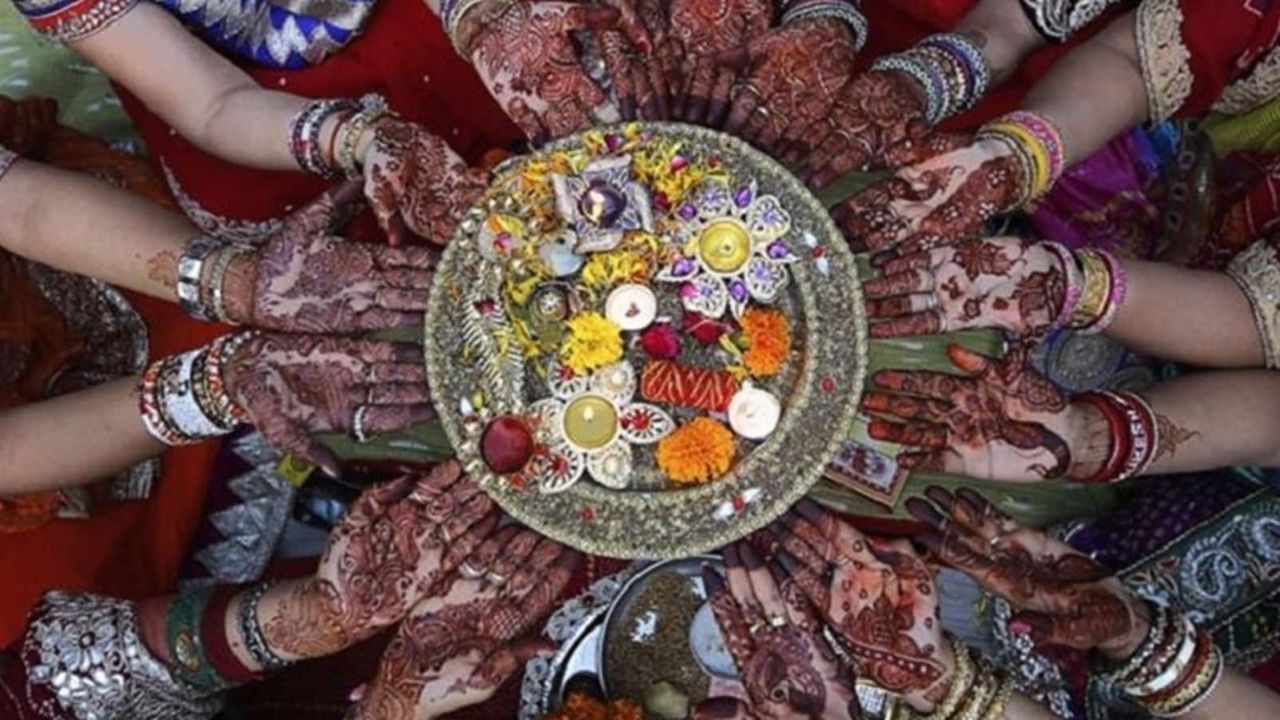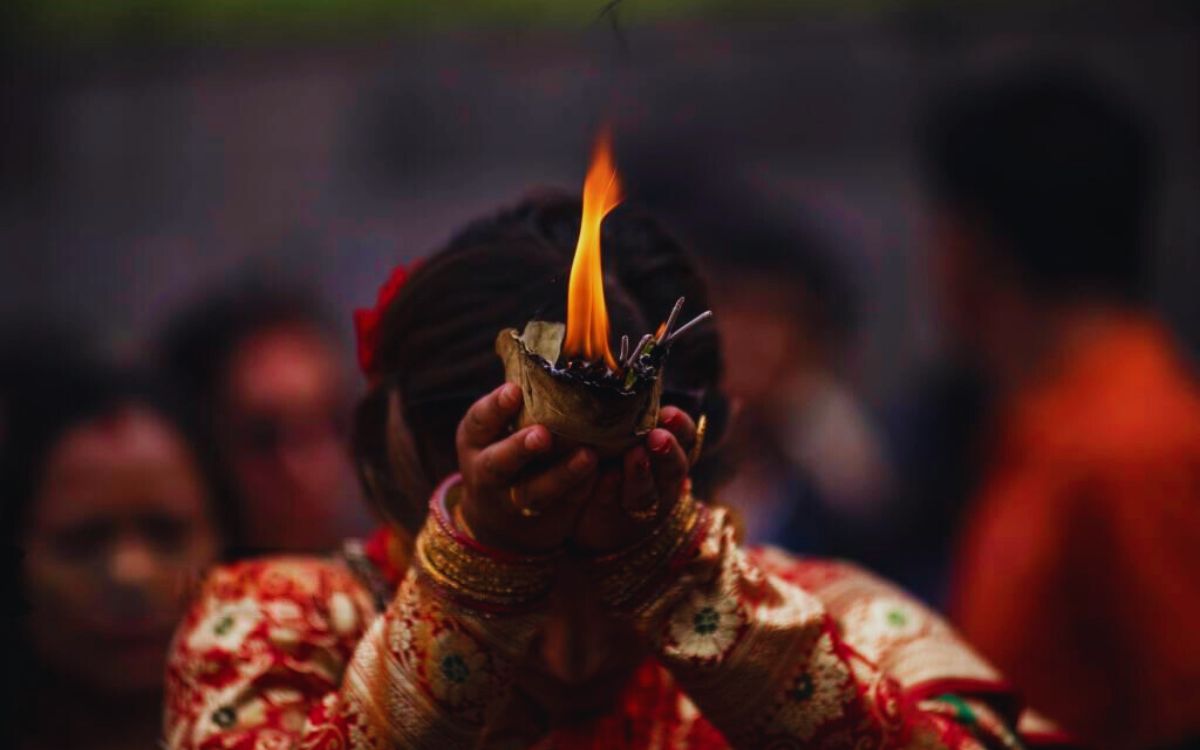Teej 2025: Spiritual Celebration Backed by Ancient Astronomical Wisdom
Teej is an incredibly beautiful festival that brings together myths, astrology, and devotion.The festival holds astronomical value based on the timing; it is timely according to the order of the cosmos.The Teej festival exemplifies how devotional acts and physical discipline during community rituals align us with the cyclical orders of our human experience of the universe.
A
Admin User·
Aug 25, 2025·4 min read

The festival and its cosmic significance
Teej is a festival in honor of Goddess Parvati and marks her marriage to Lord Shiva. Women perform the Teej festival to pray for the well-being of their husbands and children, as well as to clear the mind, body, and spirit. The festival holds astronomical value based on the timing; it is timely according to the order of the cosmos.

Hartalika Teej is on the third day of the waxing moon (the bright half) of the month of Bhadrapada according to the Panchang, the Vedic calendar. The ancient sages plug their calculations into the sun and moon cycles for the moon's position and the positions of all planets, and they knew this day was auspicious to fast, pray, and perform spiritual activities that bless and sustain marital relations and take you on a path to the development of all good things, because it is best to practice during these auspicious events.
Fasts and prayers to Goddess Parvati
The legends state that Goddess Parvati fasted for 108 lifetimes to win the love of Lord Shiva as her husband. In Vedic astrology, the number 108 is 12 (the 12 signs of the Zodiac) times 9 (the 9 planets, or Navagraha).

This story reminds us of the duality of Purusha (Shiva’s cosmic consciousness) and Prakriti (Parvati’s divine feminine energy), providing balance and symbolizing the true harmony of the masculine and feminine energies in our universe.
Panchang: The Cosmic Calendar
Panchang is an instrument that helps us determine the best times to perform rituals and to carry out spiritual activities.
Teej is celebrated on the Tritiya Tithi of Shukla Paksha, the waxing period of the Moon, which is believed to be the best time for spiritual growth, devotion to God, and marital bliss.
Hartalika Teej is the Teej that occurs during Bhadrapada when the Sun moves into the sign of Virgo (Kanya Rashi) under the influence of Mercury.
The planetary arrangement during this time is especially beneficial for spiritual purification and devotion and rituals with exactness and accuracy.

Women participate in a strict Nirjala fast for a full 24 hours, which includes a full abstention from food and water.
The fast also proffers many astrological benefits, namely:
-Mars (Mangal): In the case of women, he strengthens their marital promise, establishes marital happiness, and protects their husbands.
-Moon: She increases emotional stability, community spirit, and compassionate nurturing.
-Saturn (Shani): He helps dissolve suffering and confusion as well as physical impediments by disciplining their life.
-Rahu and Ketu: They reduce misperceptions, illusions, and attachments that disturb one's conjugal relationship.
Rituals and Planetary Energies
Red is the first color of Teej, symbolizing Mars, energy, and strength in marriage.
Women wear red sarees and ornaments in henna (mehendi) in order to balance the planetary energies.

-Venus (Shukra): Harmony, love, and beauty are qualities extended by dancing and music.
-Mercury (Budh): Communicating and understanding collectively through storytelling and working together.
-Jupiter (Guru): Wisdom, wealth, and spiritual development are urged through spiritual devotion collectively.
Celebrating the Feminine Divine
Teej's significance centers on celebrating women and their devotion and spiritual connection with Shiva and Parvati during the waxing moon in Shukla Paksha, strengthening feminine energy in individual development, and working on obligations toward a harmonious marriage and endless devotion.
The rituals are performed by making statues of Shiva and Parvati using sand to represent earthy signs (Taurus, Virgo, and Capricorn) and rooting the spiritual energy and practice in the earth and henna, balancing the fire elements in Teej's rituals while supporting the blessings of Mars.

Community and the Cosmic Order
The Teej festival is celebrated over three days, with fasting and ritual meals, representing both community and cosmic order. The harmony of both the fast and feast corresponds with the disciplined energy of Saturn, and the community aspect engages with the generous bent of Jupiter. Community events symbolize the 11th house of astrology, in that they bless us as a community of comrades with shared abundance.

Transforming Karma through Devotional practice
Conducting the fast and listening to the stories associated with Teej are noteworthy in that they are good omens. The conjunction of physical discipline, mental devotion, and community involvement transforms karma to mitigate the difficulties of marriage and lessen family disagreements.

Conclusion
Teej is an incredibly beautiful festival that brings together myths, astrology, and devotion. When women embrace the Panchaang and take up the ritual and perform with sincerity, we open up to the cosmic energies that honor our spiritual purpose and abundance. The Teej festival exemplifies how devotional acts and physical discipline during community rituals align us with the cyclical orders of our human experience of the universe.